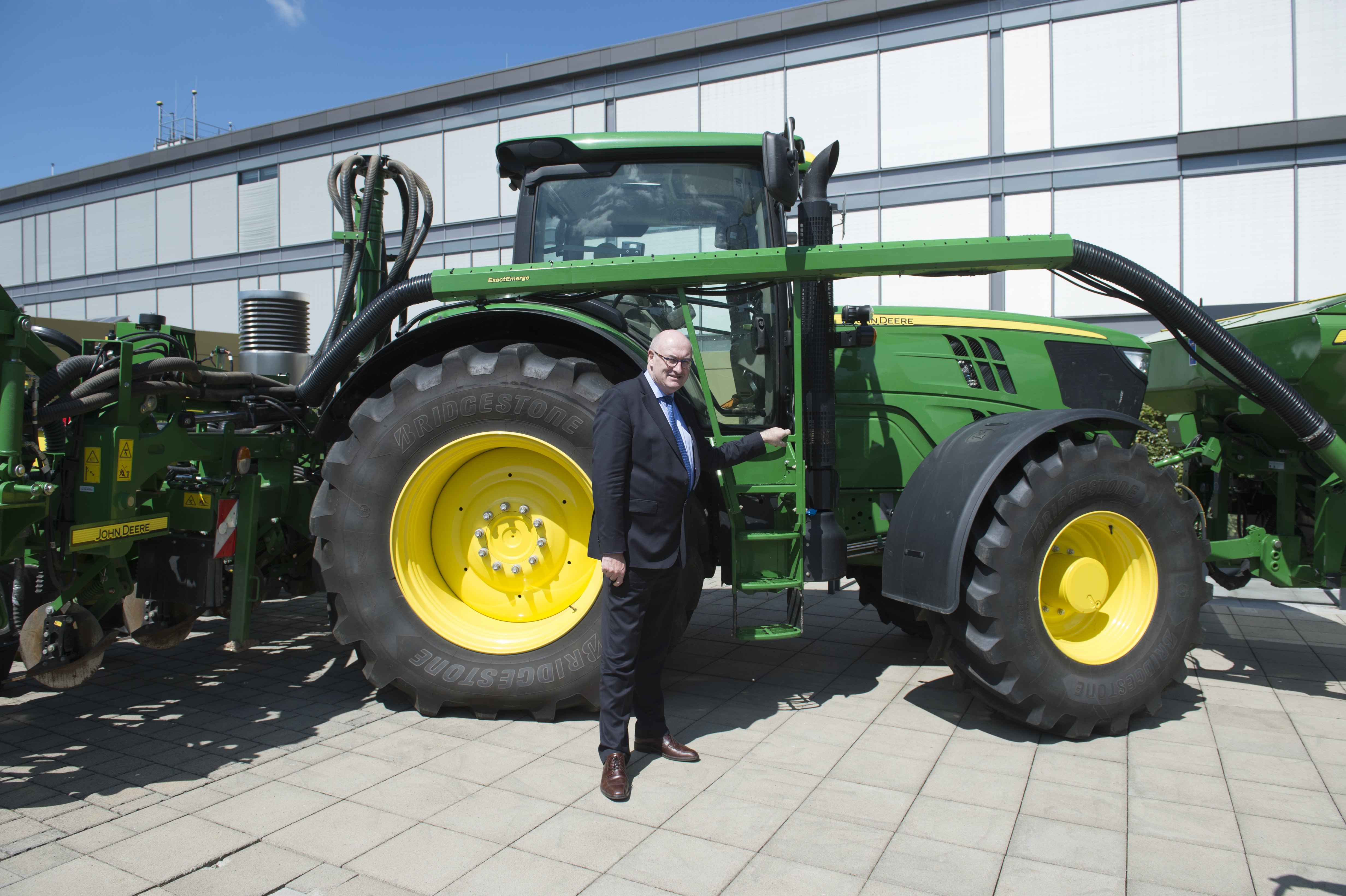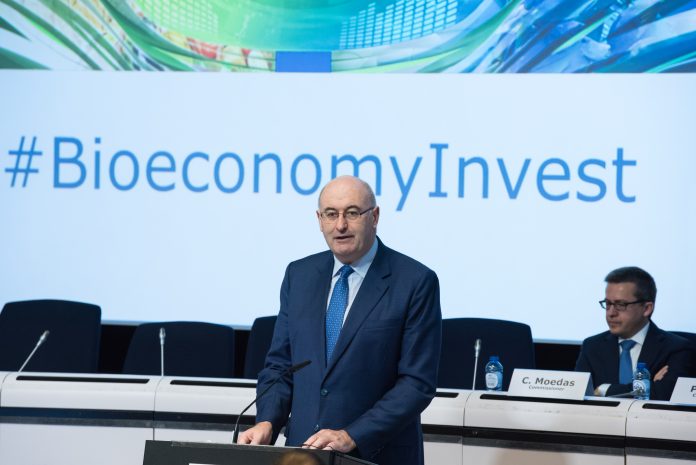Commissioner Phil Hogan recently revealed his thoughts on the role of a well-functioning bioeconomy in Europe, during a speech at Bio-based Industries Joint Stakeholder Forum
At the Juncker Commission, we are convinced that a well-functioning bioeconomy can provide solutions to many of the challenges facing the EU, particularly in relation to environmental sustainability, climate action and the creation of high-quality rural jobs.
Innovative value chains within the bioeconomy can provide new outlets for agricultural products and by-products. In this way, sources of income for farmers and rural populations can be increased and diversified. This fits very well into our shared vision of thriving and resilient rural communities in Europe.
If properly managed, a modern bioeconomy has the potential to create much-needed jobs in rural areas and to contribute to more circular, climate-friendly and resource-efficient agriculture and forestry practices. However, if we want the bioeconomy to deliver on its full potential, there are certain challenges we need to address.
The first challenge is sustainability. From my perspective as Commissioner for Agriculture and Rural Development, this means that new value chains should not jeopardise future agricultural or forestry activities by putting too much pressure on natural resources, such as water and soils.
The second challenge is inclusiveness. Today’s interventions show that there is broad support for the bioeconomy, but also a variety of interests and expectations. We must make these interests and expectations converge. The bioeconomy should not become the affair of a happy few, but benefit all the actors involved and society at large. A truly inclusive bioeconomy is one where farmers, forest owners and rural entrepreneurs receive a fair share of the value added.
This is not only a question of principle, but a key factor for delivering a successful outcome. The relevant actors will not engage and take risks; consumers will not buy products; and citizens civil society and policymakers will not provide the necessary support unless we make the bioeconomy attractive to everybody. So, let us learn from the mistakes of the past, look at the bigger picture and build together a bioeconomy that is sustainable and inclusive for everybody.
We have had the opportunity to discover the progress made by different projects financed by the BBI Joint Undertaking. The technical progress is impressive: some advanced biorefineries have been set up in recent years and much more will follow in the immediate future. This clearly shows that we are not short of technological know-how or innovation capacity in Europe. I am aware that some challenges remain, for example, access to finance for innovative projects.
But I am convinced that technological barriers will not be the main obstacle for the emergence of the bioeconomy in Europe. Instead, I believe we should look beyond technological aspects and also pay attention to the societal aspects of the bioeconomy and to business models.
In this respect, I would like to mention 2 promising examples from organisations present here today. The Irish group Glanbia and the Swedish group Södra are members of the Bio-based Industries Consortium. They are highly innovative organisations; whose cooperative business models ensure that farmers and forest owners participate in the creation of value and receive a substantial share of the profits generated.
These are just two examples and theirs is not the only valid business model. There are many other possible approaches to engage different actors, take their expectations into account and allow them to profit from this emerging business area. All workable approaches should be explored. I would, therefore, encourage industry and the BBI Joint Undertaking to keep innovating in terms of business models as well as in terms of technology.
2017 has been a very important year for the consolidation of a bioeconomy policy in Europe. Many Member States and regions have developed their own bioeconomy strategies, inspired by the EU Bioeconomy Strategy. And, importantly, a mid-term review of the latter has been performed by a panel of independent experts.
The conclusions of this review are broadly positive and place the EU at the forefront of bioeconomy innovation worldwide. Thanks to initiatives like the BBI Joint Undertaking, the Bioeconomy Strategy has delivered in fostering research and innovation, but also in other important aspects such as raising awareness and public interest on bioeconomy and creating political momentum.
But the review also identified some areas for improvement, which we will need to address in the immediate future. Improved policy coordination is one of such challenges. I have already spoken about the complexity and cross-sectoral nature of the bioeconomy. This also has implications at a policy level. Colleagues from different Commission services and other European institutions have provided their views on this today.
In relation to the Common Agricultural Policy, I am working closely with Commissioner Moedas to reinforce synergies and coherence between agriculture and research and innovation policies. This work is taking place at a very appropriate moment, given that discussions on the next financial framework, the next Common Agricultural Policy and the next Research Framework Programme are now underway.
In the context of the bioeconomy, this policy coherence is essential, because I firmly believe that farmers and foresters should be at the heart of developing innovative solutions for the use of biological resources. They have a deep well of knowledge and expertise when it comes to understanding what works and what does not work when it comes to primary production and it is imperative that we actively include this expertise in our strategies.
This would represent a win-win for our agri-food sector and our society, because a modern bioeconomy has the potential to create many jobs in rural areas, where they are much-needed. Estimates have shown that innovative biorefineries could create up to 400,000 new skilled jobs by 2020, rising to 700,000 by 2030, of which 80% would be in rural areas.
We also need to do more to explain this potential to our farmers and rural communities – they need to fully understand how much they stand to gain.
In this endeavour, we are not starting from scratch – we can build on the experience of the Agricultural European Innovation Partnership (EIP-AGRI), a policy initiative that combines the resources and tools of Horizon 2020 and Rural Development Programmes to foster innovation in rural areas, with the farmer front and centre.
But policy coordination should not be limited to European policies and Commission services. In the realisation of a knowledge-based bioeconomy, the Member States, regions and even local communities play a fundamental role.
Another challenge identified in the review refers to the focus of the Bioeconomy Strategy. The bioeconomy encompasses many sectors, both traditional and novel and the challenges are numerous and diverse. It is therefore fundamental to identify the areas where the Strategy can deliver most effectively towards the policy priorities of the Juncker Commission, including the Circular Economy and our commitments on climate change.
An increased focus will concentrate our efforts on a limited number of actions where we can make a difference and produce a clear impact. And, importantly, a more focused strategy will also simplify the required policy coordination I mentioned earlier.
If this year has been important, next year will be even more so. In 2018, the Commission will shape its budget and policies for the next programming period, from 2021 to 2027. These policies will significantly influence the evolution of the different economic sectors in Europe, including of course the bioeconomy.
As regards the Common Agricultural Policy, last week we presented a communication outlining ideas on the future of food and farming. Sustainability, innovation and diversification are central elements in this document and the bioeconomy is presented as one of the main engines that could drive European rural areas forward.
So, I fully expect that the new edition of the Common Agricultural P post-2020 will feature instruments capable of promoting sustainable and inclusive bioeconomy business models.
And in 2018 we should also engage in discussions among Commission services, but also with our stakeholders, to rethink the EU Bioeconomy Strategy. These discussions will be based on the findings of the review, but also on the input provided by our stakeholders in events like this forum.
Hopefully, by this time next year, we will be able to present you with the result of these discussions, in the form of a reviewed Bioeconomy Strategy, which would complete a sound, coherent and integrated policy framework for the bioeconomy in Europe.

This article is based on a speech given by Commissioner Phil Hogan at Bio-based Industries Joint Stakeholder Forum – 7th December 2017 in Brussels. You can read more at: https://ec.europa.eu/commission/commissioners/2014-2019/hogan/announcements/closing-address-bio-basedindustries-joint-stakeholder-forum-7th-december-2017-brussels_en
Phil Hogan
Commissioner for Agriculture & Rural Development
European Commission
Tel: +32 2 299 96 96
https://ec.europa.eu/commission/commissioners/2014-2019/hogan_en











